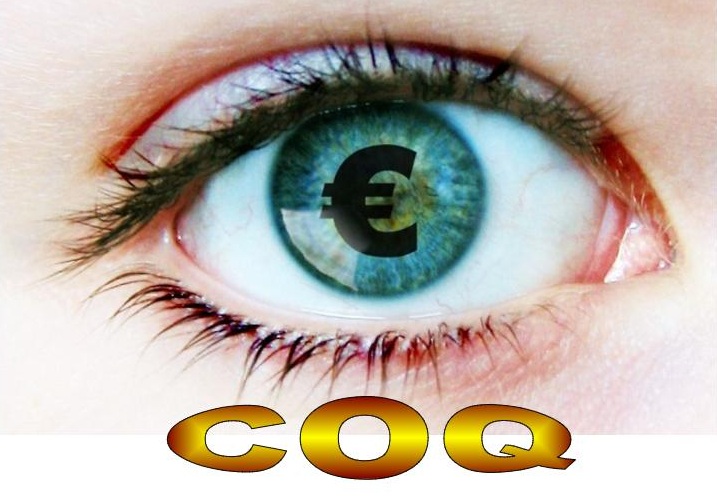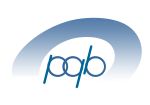T 57 - E-Learning - COQ approach - cost of quality - Measure quality
E-Learning (online course) - COQ approach (cost of quality) - measure quality - You save 42 euros on the documents provided!
|
||||

|
|
|||
| Result of the training satisfaction survey : | 100% | Last update on March 20, 2022 |
E-Learning (online course) - COQ approach (measure quality)
- identify the stakes
- understand the requirements
- identify the principles
- master the tools
Get used to
- the COQ approach
- the terminlogy
- COQ approach documents
- priciples and concepts
- cost categories
- cost calculation
- cost control
- toolbox
- causes and actions
The important and fundamental elements of a COQ approach
- history
- benefits
- steps
- PDCA cycle
- top management role
- terms and definitions
- process approach
- activities
The menu of the course
- Presentation
- MCT (multiple-choice test) Beginning (10 questions)
- 1 COQ approach
- 1.1 History
- 1.2 Benefits
- 1.3 Steps
- 1.4 PDCA cycle
- 1.5 Top management role
- 2 Definitions, books
- 2.1 Definitions
- 2.2 Books
- MCT COQ approach (11 questions)
- 3 Process approach
- 3.1 Processes
- 3.2 Mapping
- 3.3 Process approach
- Case Communication
- MCT Process approach (6 questions)
- 4 Cost categories
- 4.1 Prevention
- 4.2 Detection
- 4.3 Internal NC
- 4.4 External NC
- Case Delegate work
- MCT Cost categories (8 questions)
- 5 Cost calculation
- 5.1 Total
- 5.2 Euros
- 5.3 Hours
- 5.4 Packages
- Case Customer and special order
- Case COQ distribution
- MCT Cost calculation (6 questions)
- 6 Cost control
- 6.1 COQ meeting
- 6.2 Data collection
- 6.3 COQ optimum
- Case Process stability
- Case Data gathering
- MCT Cost control (6 questions)
- 7 Toolbox
- 7.1 Tool families
- 7.2 Quality control
- 7.3 QMS
- 7.4 PRS
- 7.5 Lean
- Case Kaizen & problem
- MCT Toolbox (7 questions)
- 8 Causes and actions
- 8.1 Root causes
- 8.2 Action planning
- 8.3 Waste hunt
- 8.4 Dashboard and indicators
- Case Root cause
- MCT Causes and actions (6 questions)
- MCT End (20 questions)
E-Learning - COQ approach
What is the field of application of the COQ approach?
The COQ approach is a universal method of continual improvement for any production or service company.
What references can be used?
You can use the ISO 10014 standard and Masaaki Imai's books:
- Kaizen, the key to Japanese competitiveness
- Gemba Kaizen, the art of managing with common sense
What are the COQ categories?
The main COQ categories are:
- prevention costs
- detection costs
- internal nonconformity costs
- external nonconformity costs
Master the COQ approach (measure quality) to be able to:
- identify improvement actions
- increase the added value produced
- get ahead of the competition
- identify and measure the cost of waste
- eliminate waste
- improve internal communication:
- raise staff awareness and accountability
- make quality quantifiable and understandable
- measure the success of the continual improvement process
- analyze the efficiency of the processes
- make decisions based on indisputable facts
- set priorities knowingly
- promote preventive measures
- achieve unsuspected savings
- increase profits
- better understand the financial results
- be one step ahead of the competition and ultimately
- satisfy customers even better
None
Any person involved in the preparation and implementation of COQ approach:
- director
- quality director
- quality manager
- metrology manager
- safety manager
- maintenance manager
- project leader
- quality correspondent
- quality technician
- quality assistant
- quality operator
- quality mission personnel
- internal auditor
- student
21 hours online on average (according to knowledge and aptitudes, this duration can vary individually). One hour of online training is equivalent to at least 2 hours of training on the spot.
You will be able to acquire the techniques to organize and carry out COQ activities:
- identify cost categories
- calculate costs
- collect the data
- analyze data
- identify the causes
- hunt for waste
- manage indicators
Methods and tools
- dedicated Internet site
- specific online training module
- Open and Distance Learning (ODL)
- your training history:
- the time you have passed on each clause and sub-clause of the module
- the record of the score of all your trials of the MCTs (multiple-choice tests)
- level test at beginning of the training
- MCTs with comments, notes on a 20 point scale and recommendations
- videos
- true stories
- case studies
- tools
- wastes
- jokes
- games
- online tutorial :
- a follow up of acquired material and the progress of each trainee
- online or by e-mail within 24 hours
- personalized answers to questions
- advice and recommendations about documents, books and useful links
- delivered certificate of attendance and mastery at the end of the training (example)
Access to the course is 60 days from the date of validation of your order. This period will be renewed for free upon a simple request within 6 months
Cost of Quality: What is it? 2' 48""
Kaizen The Secret behind Japanese Productivity 4' 16"
5 S 4' 56"
Masaaki Imai - Definition of Kaizen 4' 52"
Cost of Quality 6' 18"
Kaizen - Continual Improvement 6' 20"
The Kaizen Way: ONE SMALL STEP CAN CHANGE YOUR LIFE by Robert Maurer 7' 21"
Cost of Quality [ COQ ] Cost of Poor Quality (COPQ) | Appraisal cost, Prevention cost & Failure cost 9' 23"
The 7 types of MUDA by Masaaki Imai 14' 07"
Cost of Poor Quality - Can you calculate it? 16' 16"
Kaizen Methodology Tutorial for Continuous Process Improvement | Process Improvement using Kaizen 34' 53"
Applying Leading Indicators in Cost of Quality (CoQ) 1h 03' 33"
Here is a MCT (Multiple-choice test) to evaluate, before beginning, the level of your knowledge for this course. (One or more correct answers are possible). You can start again as many times you wish.
 1. Do these quotes really belong to their authors?
1. Do these quotes really belong to their authors?
 2. Armand Feigenbaum says that the hidden factory corrects the mistakes of the official factory up to:
2. Armand Feigenbaum says that the hidden factory corrects the mistakes of the official factory up to:
 3. The objectives of the COQ approach are often:
3. The objectives of the COQ approach are often:
 4. Compliance costs are also called:
4. Compliance costs are also called:
 5. Prevention and detection costs are part of:
5. Prevention and detection costs are part of:
 6. In the external nonconformity (ENC) costs, we find the following costs:
6. In the external nonconformity (ENC) costs, we find the following costs:
 7. During the COQ meeting the leader ensures that:
7. During the COQ meeting the leader ensures that:
 8. The approach to reducing nonconformities is:
8. The approach to reducing nonconformities is:
 9. The fishbone diagram allows us to:
9. The fishbone diagram allows us to:
 10. Examples of benefits of reducing waste:
10. Examples of benefits of reducing waste:


.png)

